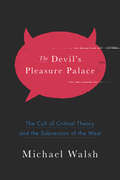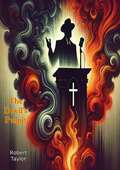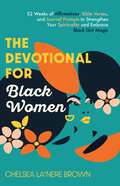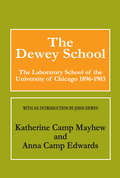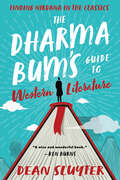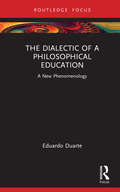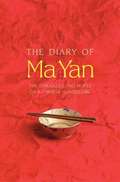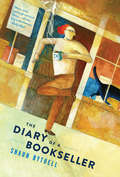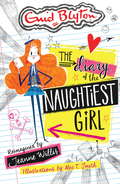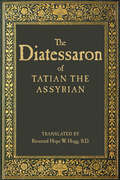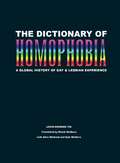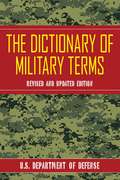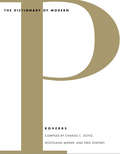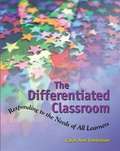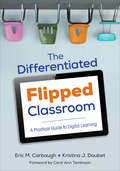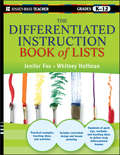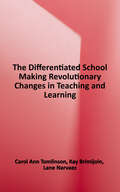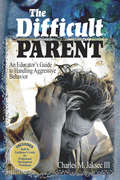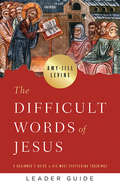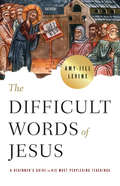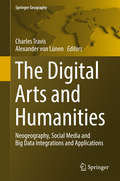- Table View
- List View
The Devil's Pleasure Palace
by Michael WalshIn the aftermath of World War II, America stood alone as the world's premier military power. Yet its martial confidence contrasted vividly with its sense of cultural inferiority. Still looking to a defeated and dispirited Europe for intellectual and artistic guidance, burgeoning trans-national elite in New York and Washington embraced not only the war's refugees, but many of their ideas as well, and nothing has proven more pernicious than those of the Frankfurt School and its reactionary philosophy of "critical theory." At once overly intellectualized and emotionally juvenile, Critical Theory - like Pandora's Box - released a horde of demons into the American psyche. When everything could be questioned, nothing could be real, and the muscular, confident empiricism that had just won the war gave way, in less than a generation, to a central-European nihilism celebrated on college campuses across the United States. Seizing the high ground of academe and the arts, the New Nihilists set about dissolving the bedrock of the country, from patriotism to marriage to the family to military service; they have sown (as Cardinal Bergoglio - now Pope Francis - once wrote of the Devil) "destruction, division, hatred, and calumny" - and all disguised as the search for truth.In The Devil's Pleasure Palace we will look at the ways Critical Theory took root in America and, once established and gestated, has affected nearly every aspect of American life and society - and what can be done to stop it.
The Devil's Pulpit: Or Astro-theological Sermons (classic Reprint)
by Robert TaylorDive into the provocative and insightful world of Robert Taylor's "The Devil's Pulpit," a work that challenges conventional religious beliefs and explores the deep connections between Christianity and ancient mythologies. Known for his eloquence and bold viewpoints, Robert Taylor offers a series of lectures that question the historical authenticity and origins of Christian doctrines, presenting a compelling case for their roots in pre-Christian myths.In "The Devil's Pulpit," Taylor meticulously examines the parallels between well-known biblical narratives and ancient pagan traditions. With keen analytical skills and thorough research, he draws comparisons between the stories of the virgin birth, crucifixion, resurrection, and other key elements of the Christian faith and similar themes found in earlier mythological systems. Taylor's work illuminates the syncretic nature of religious evolution, suggesting that many aspects of Christian teachings were influenced by or borrowed from older cultural myths.Taylor's lectures are not merely an academic critique; they are a passionate call for intellectual freedom and critical examination of long-held beliefs. He encourages readers to approach religious texts with a questioning mind, to seek truth beyond tradition, and to understand the historical context in which these narratives developed. His arguments are presented with clarity and conviction, making complex theological and historical concepts accessible to a wide audience.This book remains a significant contribution to religious critique and historical analysis, inviting readers to reconsider the origins and meanings of the stories that have shaped Western religious thought. "The Devil's Pulpit" stands as a testament to Robert Taylor's legacy as a courageous thinker and eloquent critic of religious orthodoxy.
The Devotional for Black Women: 52 Weeks of Affirmations, Bible Verses, and Journal Prompts to Strengthen Your Spirituality and Embrace Black Girl Magic
by Chelsea La'Nere BrownA Simon & Schuster eBook. Simon & Schuster has a great book for every reader.
The Dewey School: The Laboratory School of the University of Chicago 1896-1903 (Collected Works Of John Dewey Ser. #8)
by Anna EdwardsThis book talks of perhaps one of the greatest education experiments in the history of America. In 1894 John Dewey moved his position as Chairman of the Philosophy Department at the University of Michigan to assume the position as Chairman of the Department of Philosophy, Psychology, and Pedagogy at the University of Chicago. He would remain there until 1904, his departure prompted in great part by his dissatisfaction regarding his wife's treatment by the administration in her role of principal of the Laboratory School. At this time Dewey was anxious to translate his more abstract ideas into practical form and he saw the position at Chicago affording him a rare opportunity to do this.The school itself was conceived by Dewey as having an organic functional relation to the theoretical curriculum. Just as Dewey was anxious to merge philosophy and psychology and to relate both of these disciplines to the theoretical study of education, similarly he saw the school as a laboratory for these studies analogous to the laboratory used in science courses. This effort to merge theory and practice is perhaps the major characteristic of Dewey's entire professional career. In the opening sentence of Dewey's remarks in his essay in this volume, "The Theory of the Chicago Experiment," we see the extent to which this problem preoccupied him: "The gap between educational theory and its execution in practice is always so wide that there naturally arises a doubt as to the value of any separate presentation of purely theoretical principles."This book is an accurate and detailed account of one of the most interesting experiments ever undertaken in America. It provides the reader with the complexity of John Dewey's abstract philosophy experimentalism.
The Dharma Bum’s Guide to Western Literature: Finding Nirvana in the Classics
by Dean SluyterHOW THE LITERATURE WE LOVE CONVEYS THE AWAKENING WE SEEK Suppose we could read Hemingway as haiku . . . learn mindfulness from Virginia Woolf and liberation from Frederick Douglass . . . see Dickinson and Whitman as buddhas of poetry, and Huck Finn and Gatsby as seekers of the infinite . . . discover enlightenment teachings in Macbeth, The Catcher in the Rye, Moby-Dick, and The Bluest Eye. Some of us were lucky enough to have one passionate, funny, inspiring English teacher who helped us fall in love with books. Add a lifetime of teaching Dharma — authentic, traditional approaches to meditation and awakening — and you get award-winning author Dean Sluyter. With droll humor and irreverent wisdom, he unpacks the Dharma of more than twenty major writers, from William Blake to Dr. Seuss, inspiring readers to deepen their own spiritual life and see literature in a fresh, new way: as a path of awakening.
The Diagnosis & Correction of Vocal Faults: A Manual for Teachers of Singing & for Choir Directors
by James C. McKinneyPopular for more than two decades among college voice teachers and their students, this outstanding, authoritative vocal pedagogy text is an invaluable manual. It thoroughly examines the vocal problems prospective voice teachers will encounter daily in the teaching studio and choral rehearsal. The author's approach is a unique one, based in large part on diagnostic procedures similar to those used by doctors. As each vocal fault is presented, its identifying characteristics or symptoms are stated, its possible causes are discussed, and corrective procedures are suggested. Fourteen male and female voice samples of various vocal faults are discussed in the text, enabling students to better identify basic characteristic sounds associated with each fault. Current and prospective choir directors and voice teachers who need help in improving the vocal sounds of choir members or students will find this practical guidebook to be an ever-present help in time of trouble.
The Dialectic of a Philosophical Education: A New Phenomenology (Routledge International Studies in the Philosophy of Education)
by Eduardo DuarteThis book provides an account, both theoretical and phenomenological, of the education offered by philosophy. Specifically, it examines the three distinct moments that make up the practice of philosophical study: reading, writing, and discussion. By considering each moment in turn, the author explores how philosophical learning creates opportunities for what Hannah Arendt described as “the gift of thinking poetically” and suggests that the dynamic and nonlinear relationship between these moments is what constitutes the dialectic of a philosophical education.Grounded in years of practice and offering scholarly commentary throughout, this shortform book will appeal to students and philosophers of education, as well as those with interests in teaching and learning more broadly.
The Diary of Ma Yan: The Life of a Chinese School Girl
by Ma Yan Pierre HaskiWednesday, November 7. My father gave me and my brother a little money. My stomach is all twisted up with hunger, but I don't want to spend the money on anything as frivolous as food. Because it's money my parents earn with their sweat and blood. I have to study well so that I won't ever again be tortured by hunger. . . . In a drought-stricken corner of rural China, an education can be the difference between a life of crushing poverty and the chance for a better future. But money is scarce, and the low wages paid for backbreaking work aren't always enough to pay school fees. Ma Yan's heart-wrenching, honest diary chronicles her struggle to escape hardship and bring prosperity to her family through her persistent, sometimes desperate, attempts to continue her schooling. First published in France in 2002, the Diary of Ma Yan created an outpouring of support for this courageous teenager and others like her -- support that led to the creation of an international organization dedicated to helping these children . . . all because of one ordinary girl's extraordinary diary.
The Diary of a Bookseller
by Shaun BythellHilarious, wry, and charming tales of bookselling in remotest Scotland "Among the most irascible and amusing bookseller memoirs I've read." --Dwight Garner, New York TimesThe funny and fascinating memoir of Bythell's experiences at the helm of The Bookshop, Scotland's largest second hand bookstore--and the delightfully unusual staff members, eccentric customers, odd townsfolk and surreal buying trips that make up his life there.
The Diary of the Naughtiest Girl
by Jeanne Willis Alex T SmithInspired by Enid Blyton's bestselling school series The Naughtiest Girl - this is the hilarious diary of the naughtiest pupil there's ever been. Fans of Tom Gates will love this!'Mum says pupils aren't allowed to take mobile devices to Whyteleafe ... excuse me? It's the twenty-first century! What next? Ride to school on a penny-farthing?'When Elizabeth Allen is packed off to boarding school, armed with nothing but a journal to write in for entertainment, she is NOT impressed. How will she survive without her home comforts, especially her pony Ross (the only boy she has ever truly loved)? Elizabeth comes up with a cunning plan: she will be so naughty that she gets sent home . . . But then Elizabeth discovers a love for music and makes her first ever friend ... perhaps school life might not be as bad as she thought?The Diary of the Naughtiest Girl is written by bestselling author Jeanne Willis and illustrated by Alex T. Smith, acclaimed creator of the Claude books.
The Diatessaron of Tatian the Assyrian
by TatianThis edition of the Diatessaron of Tatian presents a reader-friendly version of the most popular unified account of Jesus’s life and teachings, as written in the gospels, for over three centuries, and a crucial link to the early history of the church and Christian doctrine. The Diatessaron takes center stage in Ian Caldwell’s new breakout novel The Fifth Gospel.Composed in the 2nd century CE, the Diatessaron is Tatian’s combination of the texts of Matthew, Mark, Luke, and John into one comprehensive timeline of Jesus’s life. Tatian the Assyrian, an obscure but highly controversial theologian who was expelled from the early Church, tried to fill in the gaps left by the traditional four gospels and resolve their contradictions.The Diatessaron was a major source for the story of the life of Christ until the 6th Century CE when it fell into obscurity and the four gospels took its place in the order of the New Testament.This original translation by Reverend Hope W. Hogg, B.D. preserves Tatian’s chronology and allows readers access to this little-known ancient text and a crucial link to the early Church and the life and death of Jesus.
The Dictionary of Homophobia: A Global History of Gay & Lesbian Experience
by Louis-Georges Tin Marek RedburnBased on the work of seventy researchers in fifteen countries, The Dictionary of Homophobia is a mammoth, encyclopedic book that documents the history of homosexuality, and various cultural responses to it, in all regions of the world: a masterful, engaged, and wholly relevant study that traces the political and social emancipation of a culture.<P> The book is the first English translation of Dictionnaire de L’Homophobie, published in France in 2003 to worldwide acclaim; its editor, Louis-Georges Tin, launched the first International Day Against Homophobia in 2005, now celebrated in more than fifty countries around the world. The Dictionary of Homophobia includes over 175 essays on various aspects of gay rights and homophobia as experienced in all regions in Africa, the Americas, Asia, Europe, and the South Pacific, from the earliest epochs to present day.<P> Subjects include religious and ideological forces such as the Bible, Communism, Judaism, Hinduism, and Islam; historical subjects, events, and personalities such as AIDS, Stonewall, J. Edgar Hoover, Matthew Shepard, Oscar Wilde, Pat Buchanan, Joseph McCarthy, Pope John Paul II, and Anita Bryant; and other topics such as coming out, adoption, deportation, ex-gays, lesbiphobia, and bi-phobia. In a world where gay marriage remains a hot-button political issue, and where adults and even teens are still being executed by authorities for the “crime” of homosexuality, The Dictionary of Homophobia is a both a revealing and necessary history lesson for us all.
The Dictionary of Military Terms
by DefenseThis is the comprehensive, standardized dictionary of military and associated terminology compiled and used by the Department of Defense. Divided into two sections, The Dictionary of Military Terms contains the terms and definitions approved for Department of Defense (DOD) and the North Atlantic Treaty Organization (NATO) use as well as a complete listing of commonly used abbreviations and acronyms. These military and associated terms, together with their definitions, constitute approved terminology for general use by all DOD components.The Dictionary of Military Terms supplements standard English-language dictionaries and standardizes military and associated terminology to improve communication and mutual understanding within the DOD, with other federal agencies, and among the United States and its allies. It is the primary terminology source when preparing correspondence, including policy, strategy, doctrine, and planning documents. This publication applies to the Office of the Secretary of Defense, the Services, the Joint Staff, combatant commands, DOD agencies, and all other DOD components, and covers terms such as:active defensebattle damage assessmentcandidate target listdirected energyevent matrixfootprinthub and spoke distributionmobilizationnonconventional assisted recoveryprotectionretained personnelspecial operationssurvival, evasion, resistance, and escapeweapons readiness stateand more!
The Dictionary of Modern Proverbs
by Wolfgang Mieder Fred R. Shapiro Charles Clay Doyle"You can't unring a bell. " "It takes a village to raise a child. " "Life is just a bowl of cherries. " We sometimes think of proverbs as expressions of ancient wisdom, but in fact new proverbs are constantly arising. This unique volume is devoted exclusively to English-language proverbs that originated in the twentieth and twenty-first centuries. The most complete and accurate such collection ever compiled,The Dictionary of Modern Proverbspresents more than 1,400 individual proverbs gathered and researched with the help of electronic full-text databases not previously used for such a project. Entries are organized alphabetically by key words, with information about the earliest datable appearance, origin, history, and meaning of each proverb. Mundane or sublime, serious or jocular, these memorable sayings represent virtually every aspect of the modern experience. Readers will find the book almost impossible to put down once opened; every page offers further proof of the immense vitality of proverbs and their colorful contributions to the oral traditions of today.
The Didactics of Mathematics: Approaches and Issues
by Jean-Baptiste Lagrange Bernard R. Hodgson Alain KuzniakThis book, the outcome of a conference organised in 2012 in Paris as a homage to Michèle Artigue, is based on its main components. However, it offers more than a mere reflection of this event in itself, as various well-known researchers from the field have been invited to summarize the main topics where the importance of Artigue's contribution is unquestionable. Her multiple interest areas, as a researcher involved in a wider community, give to this volume its unique flavour of diversity. Michèle Artigue (ICMI 2013 Felix Klein Award, CIAEM 2015 Luis Santaló Award) is without doubt one of the most influential researchers nowadays in the field of didactics of mathematics. This influence rests both on the quality of her research and on her constant contribution, since the early 1970s, to the development of the teaching and learning of mathematics. Observing her exemplary professional history, one can witness the emergence, the development, and the main issues of didactics of mathematics as a specific research field.
The Differentiated Classroom: Responding to the Needs of All Learners
by Carol Ann TomlinsonCarol Ann Tomlinson looks to the latest research on learning, education, and change for the theoretical basis of differentiated instruction and why it's so important to today's children.
The Differentiated Classroom: Responding to the needs of All Learners
by Carol Ann Tomlinson The ASCDThis book's insightful guidance on what to differentiate, how to differentiate, and why lays the groundwork for bringing differentiated instruction into your own classroom or refining the work you already do to help each of your wonderfully unique learners move toward greater knowledge, more advanced skills, and expanded understanding.
The Differentiated Flipped Classroom: A Practical Guide to Digital Learning (Corwin Teaching Essentials)
by Eric M. Carbaugh Kristina J. DoubetEnsure personalized student learning with this breakthrough approach to the Flipped Classroom! In the flipped classroom, students need to do more than simply re-watch a video to learn effectively. This groundbreaking guide helps you identify and address diverse student needs within the flipped classroom environment. You will find practical, standards-aligned solutions to help you design and implement carefully planned at-home and at-school learning experiences, all while checking for individual student understanding. Learn to differentiate learning for all students with structured, research-based best practices to help you: Integrate Flipped Learning and Differentiated Instruction Use technology as a meaningful learning tool Implement flexible planning and grouping Proactively use ongoing formative assessments Adjust instruction to support, challenge, and motivate diverse learners Manage the Differentiated Flipped classroom Includes practical examples and a resource-rich appendix. Make your flipped classroom a true place of learning with this go-to guide! "The expectations for teaching in today’s world are steadily increasing. Students expect their teachers to use technology in instruction. Parents and administrators expect teachers to differentiate instruction to reach every student. In this book you will learn how both models can work in concert. Even more importantly you will learn many practical strategies that will allow you to meaningfully differentiate your instruction while flipping your classroom, allowing you the greatest potential to reach all of your students." —David A. Slykhuis, PhD, President of SITE (The Society for Information Technology and Teacher Education)
The Differentiated Flipped Classroom: A Practical Guide to Digital Learning (Corwin Teaching Essentials)
by Eric M. Carbaugh Kristina J. DoubetEnsure personalized student learning with this breakthrough approach to the Flipped Classroom! In the flipped classroom, students need to do more than simply re-watch a video to learn effectively. This groundbreaking guide helps you identify and address diverse student needs within the flipped classroom environment. You will find practical, standards-aligned solutions to help you design and implement carefully planned at-home and at-school learning experiences, all while checking for individual student understanding. Learn to differentiate learning for all students with structured, research-based best practices to help you: Integrate Flipped Learning and Differentiated Instruction Use technology as a meaningful learning tool Implement flexible planning and grouping Proactively use ongoing formative assessments Adjust instruction to support, challenge, and motivate diverse learners Manage the Differentiated Flipped classroom Includes practical examples and a resource-rich appendix. Make your flipped classroom a true place of learning with this go-to guide! "The expectations for teaching in today’s world are steadily increasing. Students expect their teachers to use technology in instruction. Parents and administrators expect teachers to differentiate instruction to reach every student. In this book you will learn how both models can work in concert. Even more importantly you will learn many practical strategies that will allow you to meaningfully differentiate your instruction while flipping your classroom, allowing you the greatest potential to reach all of your students." —David A. Slykhuis, PhD, President of SITE (The Society for Information Technology and Teacher Education)
The Differentiated Instruction Book of Lists
by Jenifer Fox Whitney HoffmanHundreds of useful ideas for meeting the needs of each child The Differentiated Instruction Book of Lists is the definitive reference for DI for teachers in grades K-12. Ready for immediate use, it offers over 150 up-to-date lists for developing instructional materials, lesson planning, and assessment. Organized into 12 convenient sections, the book is full of practical examples, teaching ideas, and activities that can be used or adapted to meet students' diverse needs. Coverage includes curriculum design, lesson planning, instructional strategies, assessment, classroom management, strategies by subject area (from Language Arts to Math to Physical Education), new media, etc. Offers an easy-to-use guide that gives quick tips and methods to plan effectively for delivering truly differentiated lessons Filled with helpful DI lists, lesson plans, strategies, assessments, and more Jennifer Fox is the author of the bestselling book Your Child's Strengths The Differentiated Instruction Book of Lists is a hands-on guide for meeting the instructional needs of all students so that they can reach their full potential.
The Differentiated School: Making Revolutionary Changes in Teaching and Learning
by Carol Ann Tomlinson Kay Brimijoin Lane NarvaezLooking for advice and guidance on how to implement differentiated instruction throughout your school? Learn from the experts. Administrators and teachers alike will find viable ideas and answers to questions as leaders at two schools share milestones and vignettes from their real-life experiences in converting entire faculties to this dynamic approach to teaching and learning. <p><p>The authors balance broadly applicable guidance with specific illustrations of how two schools—a middle-income elementary school and a mixed-income high school—experienced the change process in dramatically different ways. In both instances, the new approach to teaching and learning had sweeping, positive results for staff and students. <p><p>Carol Ann Tomlinson, Kay Brimijoin, and Lane Narvaez have combined their expertise with differentiation in schools—including professional development, research, leadership, coaching, and teaching—to highlight factors that contributed to the continuing success of school reinvention efforts such as: <p>•Approaching change with the particular school culture in mind. <p>•Leading a staff toward change with appropriate pushes, pauses, and acknowledgments. <p>•Fostering continued growth in understanding and skill with differentiation in the classroom. <p>•Encouraging teachers to reinforce one another's strengths. <p>•Monitoring progress toward expanded flexibility in instructional approaches. <p>•Nurturing teacher leaders who can sustain the effort beyond one principal's tenure. <p>•Providing strong support and role models for deep and broad changes in the school's teaching practices and learning potential. <p><p>Every educator seeking to move beyond isolated efforts to differentiate instruction will find practical support and inspiration in this book. At the same time, you'll gain understanding about the key characteristics needed for deep, lasting instructional change that taps into the learning potential of all students in your classrooms and schools.
The Difficult Parent: An Educator's Guide to Handling Aggressive Behavior
by Charles M. JaksecIn this resource with a built-in facilitator's guide, Jaksec digs deeply into the problem of parental aggression, specifying strategies for a broad audience of educators using the effective RAID approach.
The Difficult Words of Jesus Leader Guide: A Beginner's Guide to His Most Perplexing Teachings (The Difficult Words of Jesus)
by Amy-Jill LevineExamine the most difficult teachings of Jesus with Dr. Amy-Jill Levine.Jesus provided his disciples teachings for how to follow Torah, God’s word; he told them parables to help them discern questions of ethics and of human nature; he offered them beatitudes for comfort and encouragement. But sometimes Jesus spoke words that followers then and now have found difficult. He instructs disciples to hate members of their own families (Luke 14:26), to act as if they were slaves (Matthew 20:27), and to sell their belongings and give to the poor (Luke 18:22). He restricts his mission (Matthew 10:6); he speaks of damnation (Matthew 8:12); he calls Jews the devil’s children (John 8:44).In The Difficult Words of Jesus, Amy-Jill Levine shows how these difficult teachings would have sounded to the people who first heard them, how have they been understood over time, and how we might interpret them in the context of the Gospel of love and reconciliation.The Leader Guide includes session outline for each group meeting with Scripture, prayer, opening activity, discussion questions, activity, and ending call to action.
The Difficult Words of Jesus: A Beginner's Guide to His Most Perplexing Teachings (The Difficult Words of Jesus)
by Amy-Jill LevineExamine the most difficult teachings of Jesus with Dr. Amy-Jill Levine.Jesus provided his disciples teachings for how to follow Torah, God’s word; he told them parables to help them discern questions of ethics and of human nature; he offered them beatitudes for comfort and encouragement. But sometimes Jesus spoke words that followers then and now have found difficult. He instructs disciples to hate members of their own families (Luke 14:26), to act as if they were slaves (Matthew 20:27), and to sell their belongings and give to the poor (Luke 18:22). He restricts his mission (Matthew 10:6); he speaks of damnation (Matthew 8:12); he calls Jews the devil’s children (John 8:44).In The Difficult Words of Jesus, Amy-Jill Levine shows how these difficult teachings would have sounded to the people who first heard them, how have they been understood over time, and how we might interpret them in the context of the Gospel of love and reconciliation.Additional components for a six-week study include a DVD featuring Dr. Levine and a comprehensive Leader Guide.
The Digital Arts and Humanities
by Alexander Von Lünen Charles TravisThe case studies in this book illuminate how arts and humanities tropes can aid in contextualizing Digital Arts and Humanities, Neogeographic and Social Media activity and data through the creation interpretive schemas to study interactions between visualizations, language, human behaviour, time and place.
